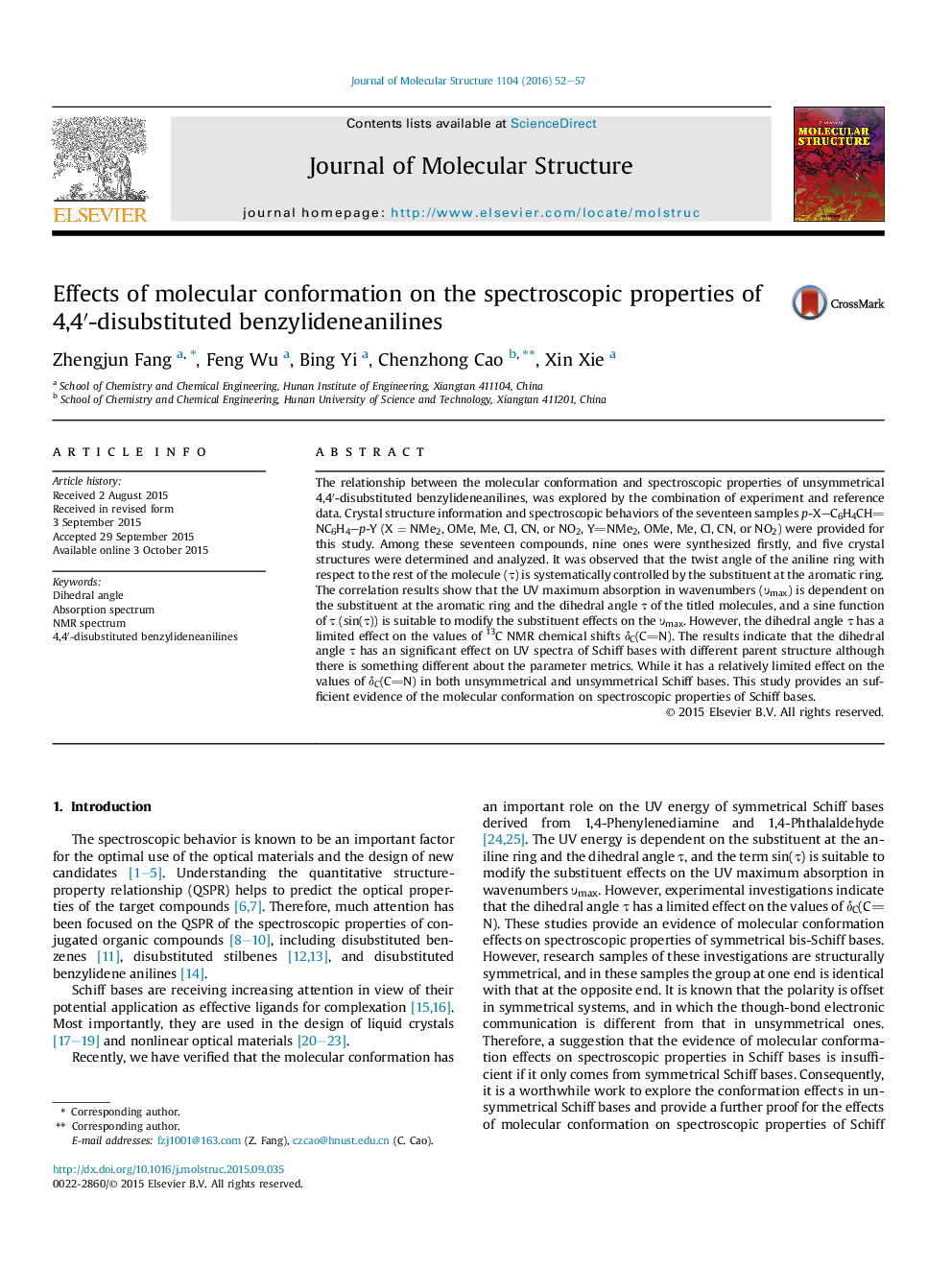| Article ID | Journal | Published Year | Pages | File Type |
|---|---|---|---|---|
| 1409064 | Journal of Molecular Structure | 2016 | 6 Pages |
•Substituent has a remarkable and systematic electronic effect on the dihedral angle τ.•Sufficient evidence was provided to clarify the conformation effect upon spectra.•τ has an significant effect on UV spectra of Schiff bases with different parent structure.•τ has a limited effect on the δC(CN) in unsymmetrical or unsymmetrical Schiff bases.
The relationship between the molecular conformation and spectroscopic properties of unsymmetrical 4,4′-disubstituted benzylideneanilines, was explored by the combination of experiment and reference data. Crystal structure information and spectroscopic behaviors of the seventeen samples p-X–C6H4CHNC6H4–p-Y (X = NMe2, OMe, Me, Cl, CN, or NO2, YNMe2, OMe, Me, Cl, CN, or NO2) were provided for this study. Among these seventeen compounds, nine ones were synthesized firstly, and five crystal structures were determined and analyzed. It was observed that the twist angle of the aniline ring with respect to the rest of the molecule (τ) is systematically controlled by the substituent at the aromatic ring. The correlation results show that the UV maximum absorption in wavenumbers (υmax) is dependent on the substituent at the aromatic ring and the dihedral angle τ of the titled molecules, and a sine function of τ (sin(τ)) is suitable to modify the substituent effects on the υmax. However, the dihedral angle τ has a limited effect on the values of 13C NMR chemical shifts δC(CN). The results indicate that the dihedral angle τ has an significant effect on UV spectra of Schiff bases with different parent structure although there is something different about the parameter metrics. While it has a relatively limited effect on the values of δC(CN) in both unsymmetrical and unsymmetrical Schiff bases. This study provides an sufficient evidence of the molecular conformation on spectroscopic properties of Schiff bases.
Graphical abstractDihedral angle τ is clearly affected by the substituent at the aromatic ring. It displays a significative effect on their absorption spectra and limited effect on δC(CN).Figure optionsDownload full-size imageDownload as PowerPoint slide
